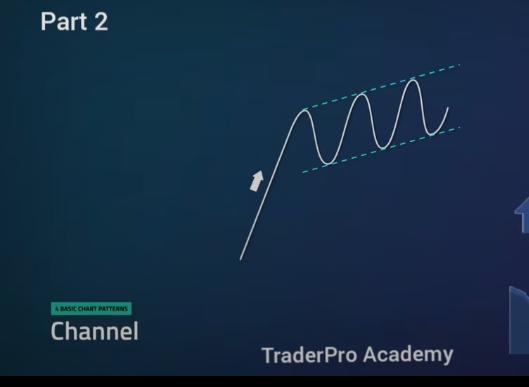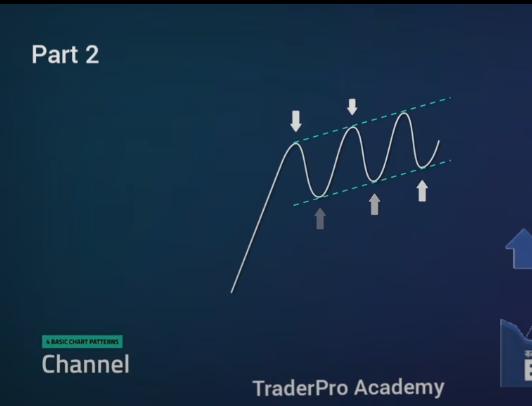As already mentioned in the previous post on flag pattern, patterns are the trends used in technical trading to predict future stocks. We will look at the channel pattern today and in which price movement is contained between two parallel trend lines. It is usually the easiest to notice as well as the most intuitive.
The line at the bottom represents a line of support while the one at the top acts as a Resistance line. There are three types of price channel pattern namely;
- Bullish price channel pattern
- Bearish price channel pattern
- Horizontal channel pattern
1. Bullish Price Channel Pattern
This is a channel pattern where the slope is positive and you can take long positions so long as it is within the lower and upper channel lines. By any chance the lower channel line is broken, you will be able to exit the long position and build a short one simultaneously. It would however be better if you wait and take back your remaining high position after a pullback instead of going for the short position.
2. Bearish Price Channel Pattern
The bear market occurs when the price follows the downward trending channel. Whenever the price ends up breaking the resistance line, it results in a new higher high and this would lead to failure.
3. Horizontal Channel Pattern
This channel occurs when the price neither follows the downside trend nor the upside trend. It would be very applicable when the price trades within a consolidated zone.
Identifying the Price Channel Patterns
You can easily identify the channel pattern from a chart due to its simplicity. All you require are two points and a specific trend that you can associate with the line. It is just a matter of locating the main Trendline and drawing the channel line as a parallel line to it. However, you will still need to have two high points in case of a bull price channel or two low points in the case of a bear price channel. More points would make the pattern even stronger.
The resistance line in a bullish pattern acts as the channel line while the support line acts as the main trendline and the case of the bearish channel line is vice versa.
Trading Price Channel
Price undergoes resistance at the resistance level and it will receive support at the support level. Traders will sell when the price reaches the resistance level and they will buy when it gets to the support level. A similar case is seen during selling short.
This pattern is the easiest and it won’t require you to have any skills in technical analysis. You can easily spot it on the chart and that’s why most traders prefer trading it. Consolidation of price centered around two parallel trade lines starting with the initial spike up of the expansion.
Price moves into a consolidation where buyers are accumulating price at a higher loss and sellers are failing at the hike often leading to price breaking higher.
Predicting Early Break-Outs
Under normal circumstances in the price channel pattern, the price maintains its support and resistance line. Though there are times when price does not touch its next support level in a bear market or its resistance level in a bull market. This would indicate a sign of an early breakout. A breakout occurs when price deviates from its original pattern and begins trading outside the pattern.











